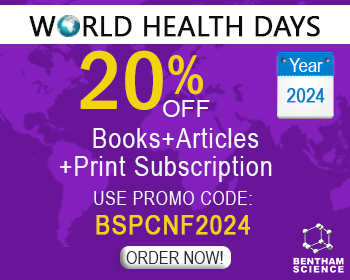Abstract
Prunus lycioides (Spach) C.K. Schneid. (= Amygdalus lycioides Spach.), popularly recognized as “Badam Talkh kuhi”, is an endemic species of Iran. It is widely distributed in Central and West Asia, where it plays a role in preventing and controlling soil erosion. Although domestic species of Prunus genus are well known and widely used in food, pharmaceutical, and cosmetic industries, inadequate information about wild species is available so far. As far as Prunus lycioides, it is commonly used by native people in traditional medicine for treating diabetes, inflammatory diseases, and microbial infections. The wild almonds are traditionally exploited for oil extraction due to their antioxidant properties. This review summarizes advances in the studies regarding Prunus lycioides and its pharmacological properties. The aim of the review is to renew the interest in this promising plant, thus stimulating researchers to go further with the study for discovering new bioactive compounds.
Keywords: Prunus lycioides, Amygdalus lycioides, Unani, Ethnobotany, Nature-Aided Drug Discovery, Traditional medicine.
[http://dx.doi.org/10.3390/molecules17021665] [PMID: 22318322]
[PMID: 29755566]
[http://dx.doi.org/10.1007/s00606-007-0539-9]
[http://dx.doi.org/10.1007/BF01260413]
[http://dx.doi.org/10.1016/j.jep.2012.09.023] [PMID: 23010365]
[http://dx.doi.org/10.1080/14786419.2019.1666385] [PMID: 31533493]
[http://dx.doi.org/10.1016/j.bioorg.2018.10.051] [PMID: 30396116]
[http://dx.doi.org/10.3390/molecules23040725] [PMID: 29565317]
[http://dx.doi.org/10.9713/kcer.2016.54.6.762]
[http://dx.doi.org/10.15419/bmrat.v5i5.438]
[http://dx.doi.org/10.1002/ptr.5219] [PMID: 25219371]
[http://dx.doi.org/10.1371/journal.pone.0065619] [PMID: 23785437]
[http://dx.doi.org/10.1007/s12010-019-02985-4] [PMID: 30854606]
[http://dx.doi.org/10.1007/s10787-018-0448-2] [PMID: 29429000]
[http://dx.doi.org/10.1016/j.ijbiomac.2014.05.050] [PMID: 24875319]
[http://dx.doi.org/10.1016/j.biopha.2019.109281] [PMID: 31377469]
[http://dx.doi.org/10.15835/nbha47311425]
[http://dx.doi.org/10.1016/j.phytol.2019.02.011]
[http://dx.doi.org/10.4172/pharmaceutical-sciences.1000437]
[http://dx.doi.org/10.1089/jmf.2007.545] [PMID: 18598173]
[PMID: 31608863]
[http://dx.doi.org/10.1016/j.phrs.2017.12.003] [PMID: 29208493]
[http://dx.doi.org/10.1016/j.scienta.2015.10.020]
[http://dx.doi.org/10.1111/jipb.12095] [PMID: 23945216]
[http://dx.doi.org/10.17660/ActaHortic.2011.912.77]
[http://dx.doi.org/10.1007/BF00123275]
[http://dx.doi.org/10.2174/1874848101003010020]
[http://dx.doi.org/10.1007/978-3-642-88458-0]
[http://dx.doi.org/10.1016/j.envexpbot.2005.10.001]
[http://dx.doi.org/10.1007/s11738-011-0819-4]
[http://dx.doi.org/10.17660/ActaHortic.2002.591.26]
[http://dx.doi.org/10.1016/j.sjbs.2016.08.001] [PMID: 30591779]
[http://dx.doi.org/10.1111/ijfs.12996]
[http://dx.doi.org/10.1111/1750-3841.13840] [PMID: 28833139]


























